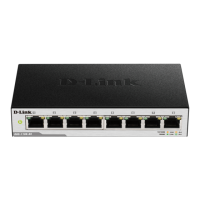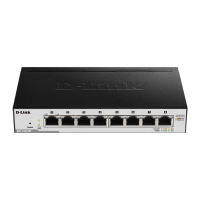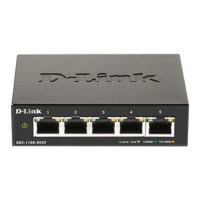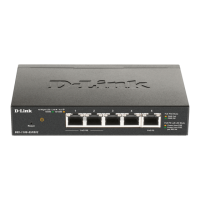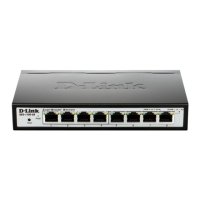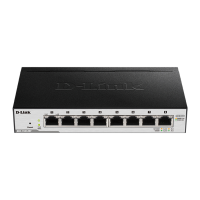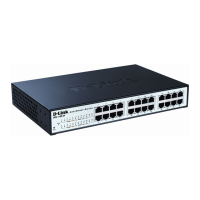5 Configuration D-Link DGS-1100-06/ME User Manual
Configuration > QinQ > QinQ Settings
The QinQ Settings page allows user to enable or disable the Q-in-Q function. Q-in-Q is designed for service
providers to carry traffic from multiple users across a network.
Q-in-Q is used to maintain customer specific VLAN and Layer 2 protocol configurations even when the same
VLAN ID is being used by different customers. This is achieved by inserting SPVLAN tags into the
customer’s frames when they enter the service provider’s network, and then removing the tags when the
frames leave the network.
Customers of a service provider may have different or specific requirements regarding their internal VLAN
IDs and the number of VLANs that can be supported. Therefore customers in the same service provider
network may have VLAN ranges that overlap, which might cause traffic to become mixed up. So assigning a
unique range of VLAN IDs to each customer might cause restrictions on some of their configurations
requiring intense processing of VLAN mapping tables which may exceed the VLAN mapping limit. Q-in-Q
uses a single service provider VLAN (SPVLAN) for customers who have multiple VLANs. Customer’s VLAN
IDs are segregated within the service provider’s network even when they use the same customer specific
VLAN ID. Q-in-Q expands the VLAN space available while preserving the customer’s original tagged packets
and adding SPVLAN tags to each new frame. Select Enabled or Disabled then click Apply to enable or
disable the Q-in-Q Global Settings.
Figure 5.49 - Configuration > QinQ > QinQ Settings
From Port / To Port: A consecutive group of ports that are part of the VLAN configuration starting with the
selected port.
Role: The user can choose between UNI or NNI role.
UNI – To select a user-network interface which specifies that communication between the specified
user and a specified network will occur.
NNI – To select a network-to-network interface specifies that communication between two specified
networks will occur.
Outer TPID (hex: 0x1-0xffff): The Outer TPID is used for learning and switching packets. The Outer TPID
constructs and inserts the outer tag into the packet based on the VLAN ID and Inner Priority.
Click Apply to implement changes made.
Configuration > IGMP Snooping > IGMP Snooping
With Internet Group Management Protocol (IGMP) snooping, the DGS-1100-06/ME can make intelligent
multicast forwarding decisions by examining the contents of each frame’s Layer 2 MAC header.
IGMP snooping can help reduce cluttered traffic on the LAN. With IGMP snooping enabled globally, the
DGS-1100-06/ME will forward multicast traffic only to connections that have group members attached.
The settings of IGMP snooping is set by each VLAN individually.
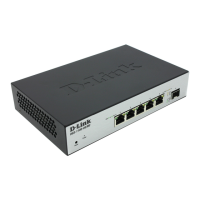
